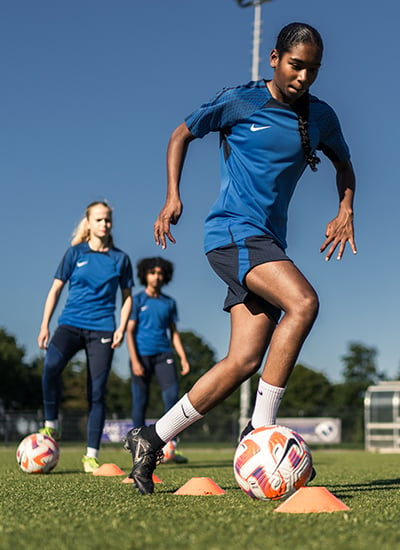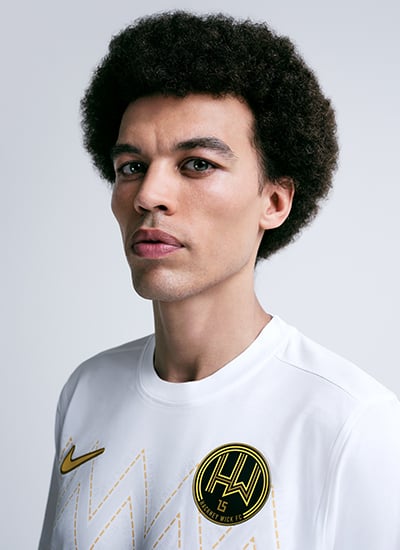Cricket uniforms have a unique flavour all their own, including collared shirts. Is this an intentional practical feature, or just pure style?
How To Remove Stains From Cricket Whites
Cricket whites are an iconic part of the sport. Not only are they a surprisingly practical piece of kit, but their shocking whiteness makes watching the sport easy to read for audiences.
However, grass and cricket are just as much tied together as the outfit. And if you’ve spent any amount of time running, sliding, or playing on grassy turfs, you know just how tricky those stains are to get rid of. Doubly so if you’re running across a pitch in all-white clothes!
That bright white and deep green combination can ruin your cricket shirts and trousers. However, with the right method, care, and maintenance, you’ll find that getting stains out of your whites, cricket or otherwise, is surprisingly easy!
Why Are Grass Stains So Strong On Cricket Whites?
Grass is probably the worst offender when it comes to stains on cricket whites, and that’s mainly due to the strong dye effect of chlorophyll.
Chlorophyll, for those of us who don’t remember plant science from school, is the pigment in plants and algae that helps generate energy for the rest of the plant in photosynthesis. And, importantly to us, it is also the pigment that gives most plants, like grass, their green colour.
Because chlorophyll is a kind of dye in itself, it binds well to a lot of different fabrics. You’ll notice this in pretty much any kind of clothing, from cricket cotton white to denim jeans, to even stain-resistant polyester sports tops.
Getting Stains Out Of Cricket Whites
Don’t worry, however. Despite the intimidating task of getting your pearly cricket whites clean again, grass and other stains that you’re likely to get on them are actually pretty easy to remove.
Before you try any of these methods, however, make sure that you give your cricket whites a good soaking in water beforehand, preferably in cold water. This allows any stains to lift slightly from your clothes and makes removing them that much easier.
Grass Stains
As we’ve already mentioned, grass is often the toughest stain to get rid of on your cricket whites.
Luckily, there are more than a few ways to tackle them. So long as the stain hasn’t been stuck in your cricket trousers for too long, at least!
Bicarbonate Soda & White Vinegar
A classic method of removing fabric stains. Good old-fashioned bicarbonate of soda and vinegar is the sort of thing that every parent or grandparent defaults to when trying to lift a stain out, whether it’s a tablecloth, a dress, or the old living room carpet.
And wouldn’t you know it? It’s also great for removing grass stains from cricket whites too!
This is how you can use these common household items to remove those pesky grass stains from your cricket clothes:
- This is how you can use these common household items to remove those pesky grass stains from your cricket clothes:
- The ratio should be about 2:1 for bicarb and water, respectively. Remember, you’re making a paste from the bicarb, not trying to dissolve it.
- Apply your paste to the stained spot on your cricket whites.
- Spray your white vinegar across your paste, and wait a few minutes. You should start to notice the bicarb and vinegar fizzing and bubbling in the area where they have been applied.
- Once the fizzing stops, use a fine brush of some kind to mix the two, and to get the stain out of all the clothes fibres.
- We prefer to use something like a nail brush or stiff toothbrush bristles for this step (a toothbrush that you won’t need, obviously!).
- Now, simply wash your cricket whites as usual, and your clothes should be stain-free!
Water & Vinegar
Having no bicarbonate of soda handy isn’t a death sentence, either. With a few changes to your strategy, distilled white vinegar can also work on its own, thanks to the acetic acid.
- Make a solution that is 1 part distilled white vinegar, and 2 parts water.
- Soak your stained cricket clothes in this solution for about an hour.
- Finally, wash them as you normally would.
Alcohol
We’ve all probably heard how wine is a great stain remover from friends and family.
While the jury’s still out on that particular question, rubbing alcohol has been proven to be a great way to get stains out of clothes, cricket whites included.
- Pour a little rubbing alcohol on the stained spot, and gently rub it into the clothes with a soft cloth.
- Then, simply wash your crickets whites as you normally would.
Laundry Detergent
Some of these stain-removing methods have used products that you may be hesitant to use on your match cricket whites.
However, you may find that a good laundry detergent is all you need to remove grass stains from your clothes.
- Simply rub the detergent gently into the stain, and let it sit for a few minutes.
- Then, wash your crickets whites as usual.
Mud Stains
While grass stains are the most tricky and common stains, they’re not the only way you can smudge or spoil your cricket whites.
Being on a pitch means that you’re also likely to get mud stains on your cricket whites, especially if the pitch conditions are muddy.
Luckily, removing most mud stains is a lot easier than grass stains.
- Allow the mud and dirt to dry on your clothes. Rubbing wet dirt into your clothes will only make removing them even trickier.
- Brush off as much of the dried mud/dirt with a nail brush as you can.
- Apply a solution of lemon juice and water to the stained area (either dabbing or spraying).
- Wash the cricket whites as you would normally.
Cricket Ball Stains
It’s not just the pitch you have to worry about. You’re not even safe from stains from cricket balls!
Traditional and professional cricket balls are made from leather and can stain lots of cricket equipment, from bats to clothes.
Luckily, it’s also a pretty simple stain to remove from your whites.
- Gently rub white soap onto the leather stain.
- Apply a colour-removing product to the same spot, then wash the whites as you normally would.
Additional Information
Don't Leave Your Stains
It’s tempting to leave your stained cricket whites a little and figure out what to do with them later.
However, many kinds of stains will become more difficult to remove once they are dry, especially stains with strong dyes, like grass.
So, unless it’s a mud stain, make sure that you take care of your stained whites as soon as possible, if you want to keep them shiny-bright!
Don’t Iron Over Your Stains
In the same way that letting stains dry on your clothes is bad, ironing over your stains allows grass or leather dye to bind to your clothes better, making it even tougher to lift stains off.
Make sure that you’ve got rid of all the stains on your cricket whites before taking iron to them for your next test match!
Do Not Use Just Vinegar
We’ve mentioned white vinegar as a great stain remover a few times here. However, you should avoid using just white vinegar, especially without water.
The acetic acid that you’ll find in vinegar also acts as a strong dye stabilizer. It’s great for permanently adding a dye colour during clothing manufacture, but terrible for getting out stains.
In short, unless you’re adding bicarb or water to your vinegar, keep it away from your cricket whites!
Final Thoughts
So, as you can see, there’s no shortage of ways to get rid of stains on your cricket clothes and equipment. And not only that, you’re almost sure to have the necessary items for at least one of them.
All it takes is a little elbow grease, and your cricket whites are as good as saved!
Related guides
Best adidas Football Kits by Colour
Summer 2020 Match Kit Guide: adidas








